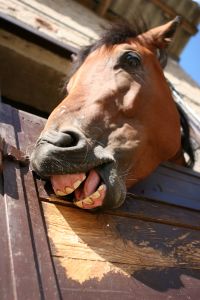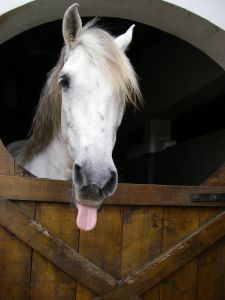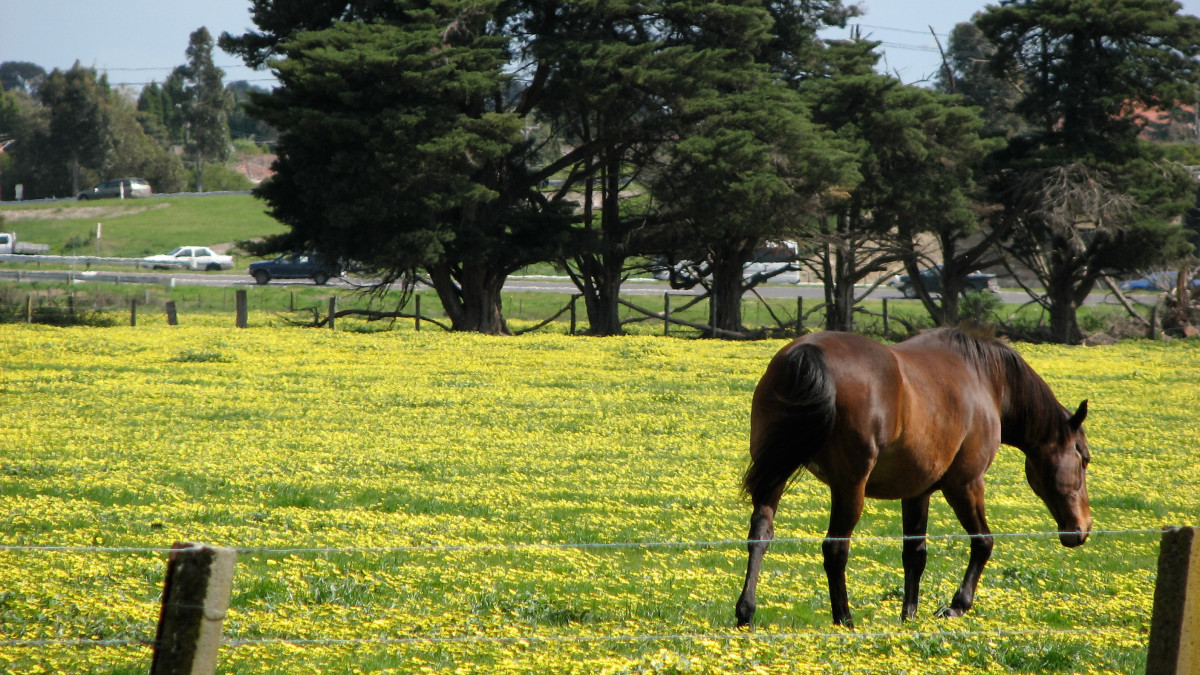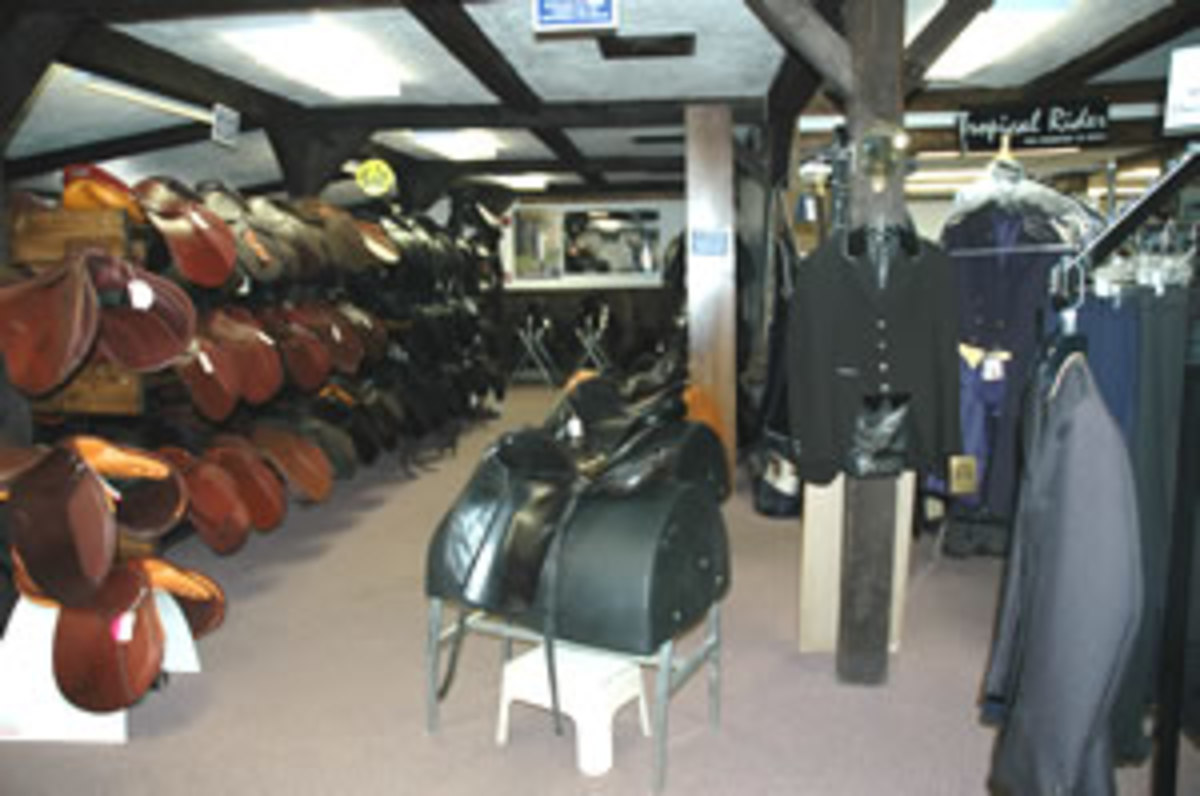Causes Of Cribbing In Horses

Cribbing, which is sometimes known as windsucking, is a very serious behavior that is exhibited by a small percentage of horses. About 5% of all horses are reported to be cribbers and they are most commonly horses that are kept in a stall extensively or stabled from a very young age. Thoroughbreds are statistically the most common breed to crib with Quarter Horses reported to the second most likely breed to exhibit the behavior. Cribbing is easily identified by the behavior of the horse and includes the animal grabbing onto a solid object with his or her mouth, arching the neck up and gulping in air, producing a loud hollow gulping, grunting or choking to wheezing type of sound.
Not Just A Bad Habit
At first glance this may seem to be just an annoying habit, but it is a significant health problem. If the horse cribs on wooden stalls or boards the splinters jam into the gums and can cause serious infections. The splinters can also be gulped in with the air, creating lacerations down the windpipe and into the lungs. Over time a horse that cribs will wear down the front teeth and this can lead to nutrition problems if the horse is on pasture at some later point. The muscles of the neck are also constantly flexed in an arched position when the horse is cribbing, creating movement problems over time.
Genetic Factors
Most researchers now agree that cribbing is predisposed genetically, not a learned behavior. Many foals will start to crib at as early as 20 weeks and this can be made much worse if weaning is done early or it is traumatic for the foal. Since the behavior isn't learned a horse or foal that is stalled in a barn with a cribber won't learn how to crib, but if the mare or stallion in the breeding pair cribbed then a foal is more likely to develop the behavior. Cribbing may also be more problematic with horses that are confined to a stall without regular turnout and those that are fed on pellet or cube type diets as opposed to grain and forage diets. Horses that are kept in paddocks or on pasture rarely crib until they are brought indoors, which leads to the next consideration.
Horse Psychology And Cribbing
Research has shown that cribbing is a psychological response to stress, anxiety, pain or confinement. A horse is a naturally nomadic animal that travels miles a day grazing and moving from food to water sources. When confined to a stall, this natural instinct is thwarted and cribbing is the horse's way of trying to do something to calm that natural need to move, chew and relieve the frustration. Unfortunately the cribbing behavior cannot be unlearned once developed. Cribbers that are turned out on pasture will often continue to crib, although at a lower frequency, since this is the way they have found stress release in the past.

Management Options
While there is no cure for cribbing, owners do have some options. One of the most effective changes is to add more forage to the horse's diet, providing them hay to chew on while in the stall. Feed the oats and hay together, slowing down the feeding and forcing the horse to spend time chewing his or her food. Specific types of paint can also be used to treat the wood in a horse's environment to discourage cribbing. This may or may not be effective depending on how strong the urge is for the horse to crib. Cribbing collars and muzzle work to provide a physical deterrent to cribbing. They restrict the movement of the jaw and the neck muscles, tightening when the horse attempts to arch the neck or open the jaw wider than would occur for eating or grazing. The horses will attempt to rub these devices off, sometimes causing hair loss and significant skin abrasions.
Habee has written a terrific article on one option to both help manage horse stress that leads to cribbing as well as to prevent it from getting started. Check out her article on Great Toys For Horses for more information
Overall the best practice is to carefully monitor all stalls and horses, particularly young fillies and colts, for any sign of cribbing behavior. If any is noted or a genetic issue is known, keep these horses on pastures or in paddocks and avoid stabling them for extended periods of time. Preventing the behavior from getting started is the best way to manage the situation.



